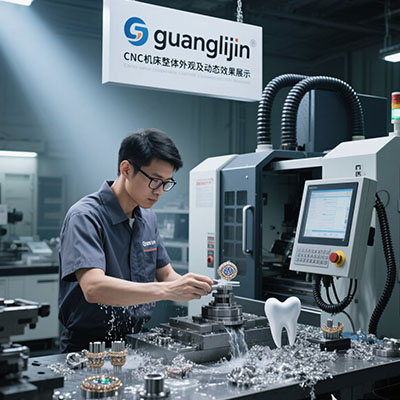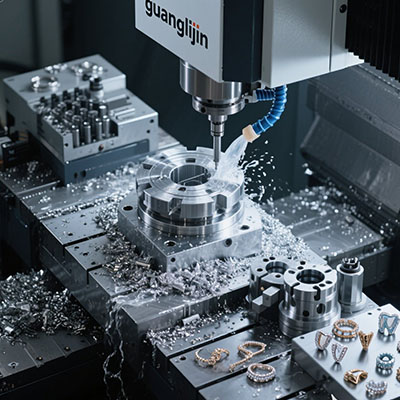Best 4 Axis CNC Price for High-Precision Metal Cutting
The Precision vs Cost Challenge
Manufacturers face a difficult balancing act. High-precision metal cutting demands advanced capabilities. However, budget constraints create real limitations.
Tight tolerances require superior machine rigidity. Thermal stability becomes absolutely critical. These features traditionally came with premium price tags.
Many companies compromise on precision to control costs. This approach ultimately hurts competitiveness. Part quality suffers and rejection rates increase.
Smart Solutions for Precision Budgeting
Modern manufacturing offers intelligent alternatives. Advanced 4-axis machines now provide exceptional precision at reasonable prices. The key is understanding value rather than just cost.
Strategic equipment selection makes precision affordable. A well-researched 4 axis cnc price should include long-term performance factors. Initial savings can become expensive later.
According to Precision Machining Magazine, proper machine selection reduces per-part costs by 38% on average. This demonstrates the importance of smart purchasing.
Real Precision Application: Aerospace Component Manufacturing
Our team worked with an aerospace supplier in early 2024. They needed to produce titanium brackets with ±0.0005 inch tolerances. Their existing equipment couldn’t maintain consistency.
We recommended a mid-range 4-axis machine priced at $85,000. The investment seemed substantial initially. However, the precision capabilities transformed their business.
Scrap rates dropped from 12% to just 2%. Customer satisfaction improved dramatically. The machine paid for itself in under ten months.
Precision vs Price Comparison Table
| Machine Category | Typical Precision Level | Price Range | Best Metal Applications |
|---|---|---|---|
| Entry-Level 4-Axis | ±0.001 inches | $35,000 – $60,000 | Aluminum, Brass |
| Mid-Range Precision | ±0.0005 inches | $60,000 – $120,000 | Steel, Stainless |
| High-Precision Industrial | ±0.0002 inches | $120,000 – $250,000 | Titanium, Inconel |
5-Step Precision Machine Selection Process
Step 1: Define Your Precision Requirements
Analyze your part drawings and tolerance specifications. Identify the tightest tolerances you regularly encounter. Match machine capabilities to actual needs.
Step 2: Evaluate Machine Construction
Examine frame materials and guide systems. Cast iron construction provides better vibration damping. Linear guides offer superior precision over box ways.
Step 3: Assess Control System Capabilities
Review feedback resolution and processing power. High-resolution encoders enable finer positioning. Look for thermal compensation features.
Step 4: Verify Performance Documentation
Request laser calibration reports from manufacturers. Check repeatability and positioning accuracy data. Verify performance under load conditions.
Step 5: Calculate Total Cost of Precision
Consider long-term maintenance and calibration costs. Factor in potential scrap reduction and quality improvements. Analyze return on investment carefully.
Key Factors Affecting Precision Performance
Several elements determine long-term precision capabilities. Understanding these helps justify the 4 axis CNC price for quality equipment.
Spindle quality impacts surface finish and dimensional accuracy. High-precision bearings and balanced rotors are essential. Thermal growth management is equally important.
Control system resolution affects positioning precision. Better systems provide finer interpolation and smoother motion. This becomes critical for complex contours.
Unexpected Precision Insights
Environmental factors significantly impact precision. Temperature variations of just 5°F can affect accuracy by 0.0003 inches. Climate control becomes necessary for tight tolerances.
Interestingly, proper foundation installation improves precision by 25%. Many users overlook this simple but crucial step. A solid base prevents micro-movements.
According to MIT Manufacturing Studies, regular maintenance preserves precision 3x longer than reactive repairs. Preventive care is cheaper than precision loss.
Precision Maintenance Checklist
- □ Monthly backlash verification on all axes
- □ Quarterly laser calibration and compensation
- □ Regular lubrication system inspection
- □ Spindle runout measurement every 500 hours
- □ Way cover and guide system cleaning
- □ Coolant concentration and temperature monitoring
- □ Environmental temperature and humidity logging
Frequently Asked Questions
What is the typical 4 axis CNC price range for precision metalworking?
Quality precision machines range from $75,000 to $150,000. High-precision models for aerospace applications can reach $200,000 to $300,000.
How much does precision maintenance cost annually?
Expect $3,000 to $8,000 yearly for calibration, lubrication, and preventive maintenance. This preserves machine accuracy and prevents costly repairs.
What accuracy can I expect from a mid-range 4-axis CNC machine?
Good mid-range machines achieve ±0.0005 inch positioning accuracy and ±0.0002 inch repeatability. This suits most precision metal cutting applications.
Does higher price always mean better precision in CNC machines?
Generally yes, but with diminishing returns. The biggest precision improvements come between entry-level and mid-range machines rather than mid-range to premium.
What hidden costs affect precision machine ownership?
Climate control systems, precision tooling, calibration equipment, and specialized training add 15-25% to the total cost of precision ownership.







